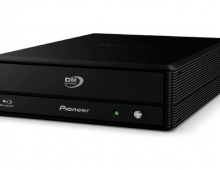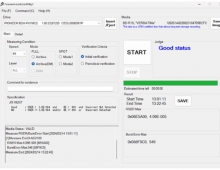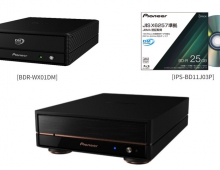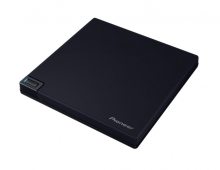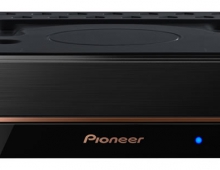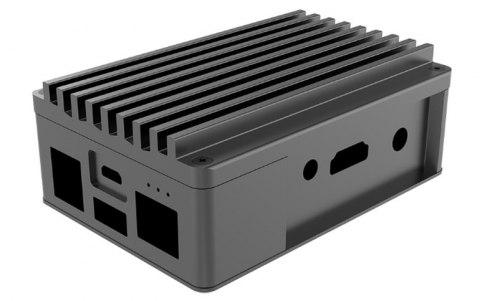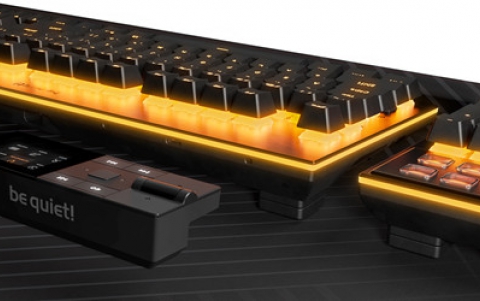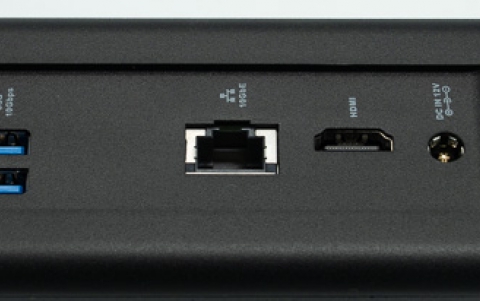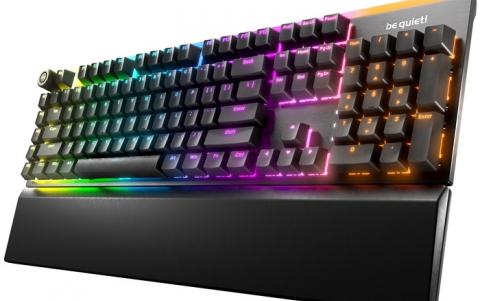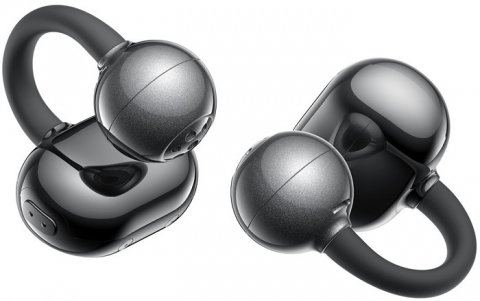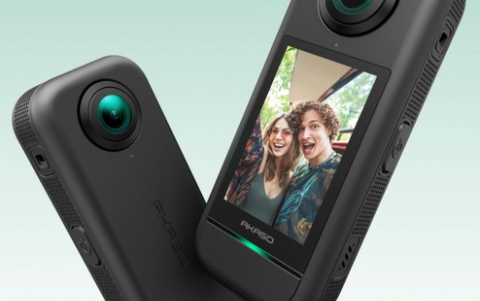
Pioneer Presents New AV Products
Pioneer is showcasing the new the BDP-LX88 and the BDP-LX58 Blu-ray/Universal Disc players, the the N-70A and N-50A streaming network players, the the PL-30 vinyl turntable and new CD micro systems just in time for the IFA 2014. The company's two newest Blu-ray/Universal Disc players are the successors of our DV-AX10 (2000) and BDP-LX91 (2008) legendary optical players.

Both players feature customised, rigid chassis and the equally rigid, quiet disc mechanism are designed to eliminate vibrations. The iron chassis is 1.6 mm thick and is further reinforced with a 3 mm thick iron plate at the bottom. This results in a weight of no less than 13.4 kg for the BDP-LX88 and 9.9 kg for the BDP-LX58. Unique for the BDP-LX88 is the three-chamber construction, in which the power supply section, the digital circuits and the analogue circuits are all housed in separated chambers. Furthermore, the main block and the power supply block are shielded (BDP-LX88 only).
The BDP-LX88 and the BDP-LX58 are compliant with the latest HDMI specs and integrate Ultra HD 4K 60p video upscaling.
The BDP-LX88 and the BDP-LX58 are designed to minimise jitter . Owners of one of the many PQLS (Precision Quartz Lock System) compatible Pioneer AV receivers can profit from this original technology, which eliminates jitter that might occur in the digital connection path between the devices.
In addition to PQLS, the BDP-LX88 is also equipped with a Precision Audio internal clock management system. This to reduce jitter via the analogue audio outputs.
In both players, the signal can be converted to the analogue domain by means of a DAC section. In the BDP-LX88, a high end Sabre32 ES9018 DAC chip design makes sure that the signal is converted to the analogue domain with precision. When playing in stereo, the BDP-LX88 deploys no less than four DAC circuits for each audio channel. The BDP-LX58 uses a Sabre32 ES9011 DAC chip.
An interesting add-on, which further improves audio quality, is the special purpose connector port on the back panel. This 'Zero Signal' port doesn’t pass through any signals, but is used for extra grounding.
For starters, both players read Blu-ray discs (also BD-R/RE-variations), DVD discs (DVD±R/RW versions included), CD discs and even Super Audio CD albums and DVD-Audio discs. The audio file compatibility list ranges from MP3, WMA, FLAC and APE to DSD (2.8 MHz), LPCM, WAV, ALAC and so on. Lossless high-res files (max. 192 kHz/24 bit) in FLAC, ALAC, LPCM (WAV) and AIFF and multichannel files (FLAC, DSD, and WAV) are supported as well. The players also read video files such as MPG, MP4, TS, M4V, AVI, MOV, DivX plus HD, WMV and MKV.
The BDP-LX88 and the BDP-LX58 can obviously cope with the latest surround formats from Dolby and DTS, such as Dolby True HD and DTS HD Master Audio. Audio streams containing the newly announced Dolby Atmos multi-dimensional sound format will be passed to a Dolby Atmos compatible AV receiver.
The BDP-LX88, as well as the BDP-LX58 feature two HDMI-outputs. Balanced and unbalanced stereo analogue audio outputs are available on the BDP-LX88, as well as optical and coaxial digital outputs. The BDP-LX58 has unbalanced analogue stereo outputs and a coaxial digital output.
Both players also have two USB-ports.
The BDP-LX88 will be available in December 2014, while the BDP-LX58 will be released next month.
Pioneer also introduced today the N-70A and N-50A streaming network players.
The units can be connected to a wired or a wireless network, and stream music from a PC, Mac or NAS (Network Attached Storage). It’s also possible to receive internet radio stations using vTuner and to listen to the Spotify Connect music service. Streaming music from an iPhone, an iPod touch using AirPlay technology is also possible.

However, the N-70A and N-50A might as well be used without a network. The USB ports on the front and the back allow the user to connect a hard disc, from which music can be played directly. In the same way, an iPod or an iPhone can be connected. It’s also possible to connect a laptop or a desktop pc or Mac to the N-70A and N-50A, using the dedicated B-type USB port at the back. This way, the N-70A and N-50A will be deployed as a high-end asynchronous USB DAC, which accepts DSD signals (2.8 MHz/5.6 MHz) and PCM signals up to 384 kHz. The N-50A plays DSD signals up to 5.6 MHz and PCM signals up to 192 kHz.
Inside, the N-70A is divided into three separated chambers, minimising the chance of interference that might degrade the audio signal. Furthermore, the unit is equipped with separated, individually shielded transformers for the analogue and the digital circuits. The N-70A accepts hi-res audio signals up to 384 kHz/32 bit, including DSD signals (2.8/5.6 MHz). The device can also upsample digital or analogue signals to 384 kHz/32 bit. Last but not least, Pioneer's Hi-Bit 32-bit extension technology ensures that the original musical content is perfectly preserved.
The N-50A features two separated transformers are used for the analogue and digital circuits. The N-50A is able to cope with high-resolution audio signals up to 192 kHz/32 bit and handles DSD signals (2.8 MHz/5.6 MHz) as well.
Furthermore, both analogue and digital signals can be upsampled to a resolution of 192 kHz. The same Hi-Bit 32 bit extension technology as used in the N-70A, is integrated in the N-50A as well.
Inside the N-70A, two Sabre32 ESS9016 chips are deployed to take care of the D/A conversion process. Each chip uses no less than eight D/A-conversion circuits. The N-50A uses two Sabre32 ESS9011 chips for D/A conversion, with two D/A-conversion circuits on each chip.
Both the N-70A and the N-50A feature a high-end DAC section that can also be used to improve the sound quality of external digital sources, by simply connecting these sources to the coaxial and optical inputs of the N-70A and N-50A. The N-70A and N-50A also have coaxial and optical digital outputs, as well as unbalanced and balanced (N-70A only) analogue outputs. Both units are equipped with a USB type A port to connect a hard disc or a similar device, as well as USB type B port, which can be used to set up a direct connection with a pc or a Mac. The N-70A also has a headphone output on the front panel, which is driven by a dedicated high performance headphone amplifier.
The streamers are compatible with FLAC, ALAC, MP3, AIFF and WAV files, up to a resolution of 384 kHz/32 bits (192 kHz/32 bits on the N-50A). DSD files (2.8/5.6 MHz) can be read as well.
The N-70A (S/K) and N-50A (S/K) are available from November 2014.
The new PL-30 vinyl turntable is fully automatic, which means that the tone arm will be positioned exactly above the very first grooves of the record and will then gently be lowered to start the music. All by pushing a single button. When the record is finished, the tone arm will automatically return to its base.
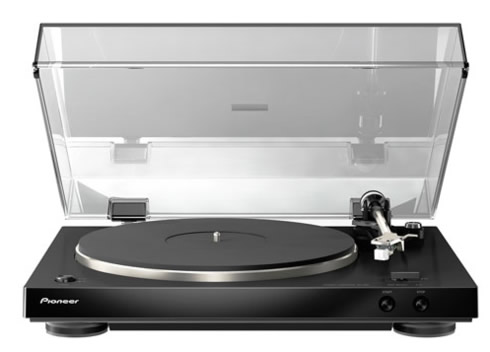
The PL-30 has a double-layered chassis with a 4 mm metal bottom plate. Both protect the turntable against unwanted vibrations. Furthermore, the aluminium platter and the aluminium die-cast tone arm block any remaining vibrations, so the musical signal remains untouched. Even the 5 mm thick rubber mat that rests on top of the platter is designed to stop vibrations.
A unique feature of the PL-30 is the built-in phono pre-amplifier, which allows connecting the PL-30 directly to virtually any amplifier, AV receiver or compact system. This is not possible when using an ordinary turntable, because an external phono pre-amplifier needs to be inserted to strengthen and to equalise the signal first. However, if needed the PL-30’s built-in phono pre-amplifier can be bypassed as well.
It will be available from January 2015.
Pioneer's The X-PM32 and the X-PM12 CD micro systems feature an integrated CD drive, which reads regular CD’s, as well CD-R/RW discs with MP3/WMA files. The USB port on the front panel allows users to play MP3/WMA music from a smartphone. It’s also possible to use a wireless Bluetooth connection to feed music to the X-PM32 and the X-PM12 from a smartphone or another Bluetooth device. An FM tuner with RDS and 30 presets completes the package.

Both micro systems have an on-board equalizer with four presets, which can be used to tune the sound at will. Another feature to further spice up the sound is the P-BASS mode. P-BASS adds a stronger bass foundation with more depth and impact to the sound.
The high power 2 x 75 Watts Class D digital amplifier (2 x 38 Watts in the X-PM12) will drive the accompanying speaker systems with both force and finesse. If more bass should be needed, an extra subwoofer can be connected.
The X-PM32 has a 2-way speaker system with three active drivers: a tweeter (5 cm) and two woofers (9 cm each). An extra 12 cm passive radiator makes sure that the bass output is on par to that of much larger speaker systems. The same passive radiator is used in the X-PM12, combined with two active drivers: a tweeter (5 cm) and a woofer (9 cm).
Both systems are compatible with the Pioneer Wireless Streaming App, which can be downloaded free in the App Store or in the Google Play store. Using the Wireless Streaming App unlocks some extra possibilities, such as Club Sound Boost, Tempo Control and Advanced Sound Retriever.
The X-PM32 and the X-PM12 are available from October.
Last but not least, Pioneer launched two entirely new micro network CD receiver systems: the X-HM82 and the X-HM72. Both devices have a built-in CD drive, which reads regular CD-audio discs, as well as CD-R/RW discs with MP3/WMA files. It’s also possible to listen to FM/AM radio stations, as well as internet radio broadcasts with vTuner. What’s more, these units are also prepared for Spotify.
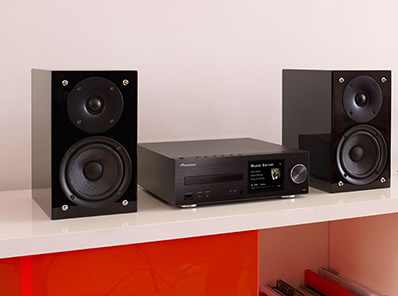
The X-HM82 is available with a built-in DAB+ tuner as the X-HM82D (K). The X-HM72 is also available with a built-in DAB tuner as the X-HM72D (K/S).
Hi-res audio music streaming
The X-HM82 and the X-HM72 are fully DLNA Certified, which makes it easy to stream music over the network, wired or via Wi-Fi. Using a network connection (or via USB) these systems are able to play hi-res audio such as 2.8MHz DSD files and 192 kHz/24 bit WAV, FLAC and AIFF files. Of course, standard resolution music formats, such as WAV, FLAC, AIFF, ALAC, MP3, WMA and AAC can be read as well.
Bluetooth connectivity is one of the key features of the new X-HM82 and X-HM72. Both micro systems support A2DP and AVRCP Bluetooth profiles, making it easy to connect smartphones and tablets. To make sure that the best possible sound quality is achieved when using Bluetooth, the X-HM82/72 are compatible with the aptX codec.
The Bluetooth Auto Connect feature will remember every Bluetooth device that gets connected, and reconnect it automatically in the future. Bluetooth Standby enables the micro systems to be powered up from a Bluetooth device.
These new systems are also equipped with AirPlay, allowing the user to stream audio content wirelessly from an iPod/iPhone/iPad. It’s also possible to set up a wired connection with an iPod/iPhone/iPad, using the USB port on the front panel. A special stand for iPod/iPhone/iPad is included.
Both sets are equipped with an analogue stereo input and a headphones output on the front panel. Two more stereo inputs are hidden at the back of the unit, as well as a subwoofer output, an optical digital input, a LAN port and a pair of speaker terminals.
The 2 x 50 Watts digital class D amplifier offers power to drive the included bookshelf speaker system. The X-HM82 is delivered with a 2-way speaker set, in which a 12 cm glass fibre woofer is combined with a 25 mm dome tweeter. The seamless cabinets are finished in classy piano black. The X-HM72 comes with a 2-way speaker set with a 12 cm woofer and a 25 mm dome tweeter.
The devices will be available from the end of September.

